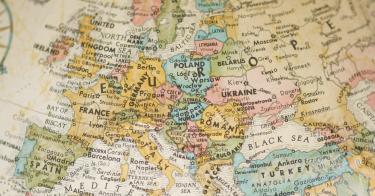Nearly 30 years ago, the people of Eastern Europe were freed from the yoke of communism. Their liberation is a reminder that the Cold War didn't just end — it was won. And it was won because the ideas espoused by leaders such as Ronald Reagan, Margaret Thatcher and Pope John Paul II were far stronger than any army the Soviet Union could ever field.
But eternal vigilance, as the saying goes, is the price of liberty. Freedom won can, through neglect, become freedom lost.
Which is why, since the lifting of the Iron Curtain, America has maintained a long-standing interest in Eastern Europe. President Trump has taken a personal interest in the region, and even attended the 3 Seas Initiative conference in Poland last summer.
The 3 Seas Initiative consists of 12 central and eastern European countries situated between the Baltic, Black and Adriatic Seas: Austria, Bulgaria, Croatia, Czech Republic, Estonia, Hungary, Latvia, Lithuania, Poland, Romania, Slovakia and Slovenia. The aim is to strengthen trade, infrastructure, energy and political cooperation among its member-states.
It's a large area. The countries in the 3 Seas Initiative account for 28 percent of EU territory and 22 percent of its population but only 10 percent of its GDP. With the right priorities pursued by the 3 Seas countries, along with U.S. help and support, there's a lot of potential and opportunities for faster economic growth in this region.
As Trump noted during his visit: “The Three Seas Initiative will transform and rebuild the entire region and ensure that your infrastructure, like your commitment to freedom and rule of law, binds you to all of Europe and, indeed, to the West.”
The territory has been strategically important for centuries. The founder of modern geo-politics, Sir Halford Mackinder, wrote in 1919 that Eastern Europe is crucial for Europe's economic well-being and security.
There have been past attempts at aligning to this region against a common threat. In the 1920s, Polish leader Józef Piłsudski called for an “Intermarium” or a federation of states located between the Baltic and Black Seas as a balance of power against Russia and Germany.
Now, nobody is calling for these countries to unite as Piłsudski did. But the sort of multilateral regional cooperation seen today with the 3 Seas Initiative can bring huge benefits to the region — and that's good news for freedom.
Make no mistake, Trump's visit to the 3 Seas Conference was not a simple blip in U.S. foreign policy. It's part of a grander strategy for Europe. Vice President Mike Pence followed Trump's visit to Poland by traveling to Estonia, Georgia and Montenegro, affirming U.S. commitment to these countries and strengthening U.S. focus on the overall region.
The benefits are more than economic. It's in America's interest that Eastern Europe remains united in confronting the Russian threat and navigating the challenges of economic growth and energy security.
Trump's participation in the 3 Seas Initiative conference gave the effort a much-needed U.S. stamp of approval. He summed up the importance of its success in his remarks: “When your nations are strong, all the free nations of Europe are stronger, and the West becomes stronger as well. Together, our nation and yours can bring greater peace, prosperity, and safety to all of our people.”
This piece originally appeared in TribLive




